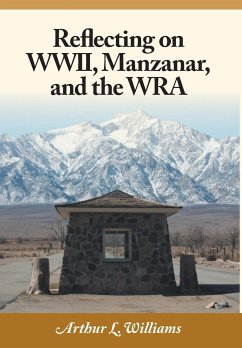Through autobiographical and historical information, Reflecting on WWII, Manzanar, and the WRA provides a broad overview of life in California both before and after the bombing of Pearl Harbor, leading to the creation of the Manzanar War Relocation Center, the first camp built for the incarceration of Japanese Americans during WWII. Although from outside its perimeter Manzanar camp resembled a military base, this book reveals it to have been more like a city, yet one its inhabitants were forcibly confined to. The War Relocation Authority hired over 200 employees to live within the same barbed-wire enclosure and tasked them with creating and running this complex facility. This book, told from the first-hand experiences of the teenage son of two WRA employees, focuses on the complexities of life within Manzanar camp as employees and internees learned to work together to build a city, complete with hospital, schools, churches, and manufacturing plants, out of an incarceration center. It was through daily, side by side contact that each grew to understand and respect the other. Never before has a book's focus fallen upon the WRA employees and their families and the day to day struggles of operating the camp at Manzanar.
Hinweis: Dieser Artikel kann nur an eine deutsche Lieferadresse ausgeliefert werden.
Hinweis: Dieser Artikel kann nur an eine deutsche Lieferadresse ausgeliefert werden.








